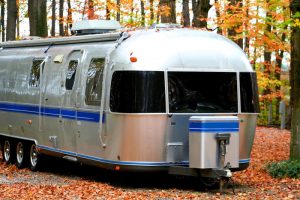
After a season of traveling and enjoying the open road, it’s time to winterize your recreational vehicles. While this isn’t the most enjoyable aspect of owning a motorhome, it is necessary to make sure it will be in top condition when the time comes to start traveling again in the spring. The following is a step by step checklist to make sure you properly winterize your motorhome.
1. Clean the Water System
Make sure the fresh, gray, and black water tanks are all drained. The black tank can be cleaned with a wand attachment that’s connected to the end of a hose. It’s important to drain all water out of each tank your motorhome may have to make sure the pipes don’t freeze and burst during the winter months. The next step is to purge the entire system to make sure every bit of water has been completely drained. You could do this only using compressed air but it’s considered more reliable to use air first and then antifreeze.
2. Change Filters and Use Antifreeze
If you do have a water filter it’s recommended to remove it and put in a filter bypass. This will keep antifreeze from damaging the filter. This step can be skipped if you were planning on replacing the filter in the spring. Add new antifreeze for the winter. Make sure to use non-toxic RV antifreeze, not the automotive kind. This type of antifreeze is usually pink. Depending on the size of your RV, you’ll need approximately 2 to 3 gallons of antifreeze. Using the RV’s internal water pump, flush out the system with antifreeze.
3. General Cleaning
Now is the time to give the RV an overall cleaning from top to bottom. Clean all showers, tubs, and sinks. Thoroughly clean any stoves, ovens, and refrigerators. Completely thaw and dry the freezer and keep the fridge door propped open. Turn off the motorhome’s primary circuit breaker and disconnect from any type of shore power. You may want to leave dryer sheets or mothballs inside the motorhome at various spots to keep animals from hibernating inside.
4. Park the RV in a Safe Spot
Try to park your motorhome in an open area that’s not too close to trees or power lines. In the case of strong winter storms, lines and tree limbs could fall and damage the RV. Make sure the RV is parked on a concrete or a paved surface so the tires don’t sink into the ground. Next, all roof vents need to be completely closed. Remove any valuables from the motorhome. This is especially important if your RV is in a storage lot. Make sure the parking brake is on and then use wheel chocks to secure your motorhome.
Following each of these steps will help ensure that your motorhome stays safe and in good condition throughout the winter months. Taking the time to clean the water system, put in antifreeze, and then completely clean the RV will make sure it’s ready for more adventures on the road come spring.
In the market for an RV? Southeast Financial can help! Contact us today for all of your RV financing needs.

